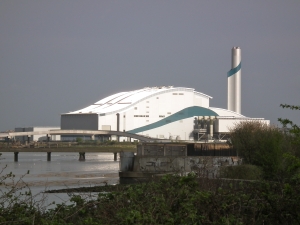
We saw in one of our early blog posts that power generation facilities such as Energy from Waste (Efw), Biomass, CHP, and Anaerobic Digestion plants are ideally suited for natural ventilation systems to dissipate heat, dilute fumes, and clear smoke in the event of a fire. In further articles, we covered the design and product selection of natural ventilation systems:
- When is natural ventilation the right solution for power plants?
- How to choose Natural Ventilation: A Product Selection Guide for Energy from Waste (EfW), Biomass, CHP, and Power Generation Plants
So, now that you have completed your design, selected and sized your equipment, what else do you need to consider?
- Positioning your temperature sensors. The system will operate using temperature readings from your sensors, therefore you should never position them next to areas that will artificially affect the readings. These can be areas with high heat gains or that have excessive draughts.
- Positioning your inlet ventilators. There may be occasions where low level inlet ventilation is required to control internal temperatures when the outside temperature is below 0ºC. If this is the case, you should ensure that inlet equipment is not positioned next to areas that will be affected by freezing temperatures.
- Limit low level inlet velocity to 1.5m/s. If the inlet velocity exceeds 2m/s, you could have issues with noise and vibration. High level extract velocity is harder to control; even though some roof ventilators can cope with a higher velocity, you should try to limit it to 3.5m/s.
 Graeme Clark is a Senior Consultant for Colt UK and specialises in the design and product application of energy efficient HVAC and smoke control systems.
Graeme Clark is a Senior Consultant for Colt UK and specialises in the design and product application of energy efficient HVAC and smoke control systems.


